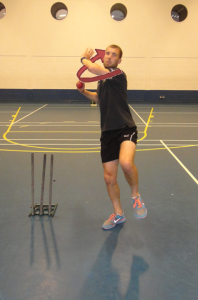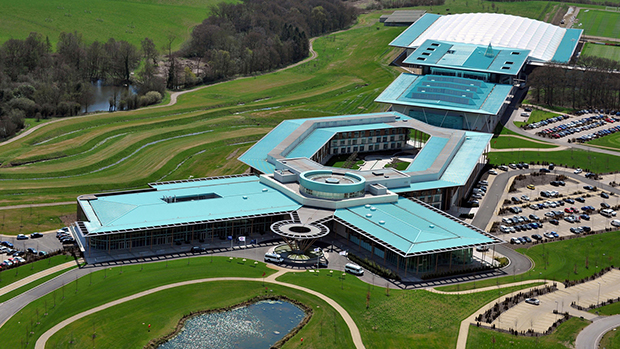I have been fortunate enough to have been accepted to present two of my recent studies at the British Association of Sport and Exercise Science (BASES) conference on 1st and 2nd of December this year. Not only am I lucky enough to have been chosen to present, I get to visit the scientific hub of English football. The conference is being held at St George’s Park in Burton-upon-Trent, the brand new national centre for English football. State of the art facilities make it a playground for sports and exercise scientists, one that I most definitely will enjoy.

One issue I address in this study is quantifying the relationship between three-dimensional spinal movement and shoulder counter-rotation. Shoulder counter-rotation is the max rotation of the shoulders in the opposite direction to the batsman after the back foot has landed. This counter-rotation is used by bowlers to help generate pace on the ball, however, high counter-rotation values have been shown to place bowlers at increased risk of lower back injury. The mechanism by which this occurs still remained unclear, as shoulder counter-rotation values only takes rotation at the shoulders into account (which could be caused by spinal rotation or whole body rotation). My study aims to fill in the gaps in this knowledge by looking at the relationship between shoulder counter-rotation values and three dimensional movement of the lumbar and thoracic spine.
The technology I have used in the above study is inertial sensing technology and is a novel method of measurement for spinal movement in fast bowling. Therefore, I am also presenting research looking at the reliability of these sensors and how they may offer a more portable alternative to the camera based systems that are used at present. Once again, I would like to thank Bournemouth University for supporting me with the dissemination of this research.

 Alan Breen: 0.2 FTE Professor of Musculoskeletal Research in the Faculty of Science & Technology
Alan Breen: 0.2 FTE Professor of Musculoskeletal Research in the Faculty of Science & Technology










 Up2U: New BU academic publication
Up2U: New BU academic publication New BU midwifery paper
New BU midwifery paper BU academic publishes in online newspaper in Nepal
BU academic publishes in online newspaper in Nepal Final day of the ESRC Festival of Social Science
Final day of the ESRC Festival of Social Science Using Art to enhance Research
Using Art to enhance Research ECR Funding Open Call: Research Culture & Community Grant – Application Deadline Friday 12 December
ECR Funding Open Call: Research Culture & Community Grant – Application Deadline Friday 12 December MSCA Postdoctoral Fellowships 2025 Call
MSCA Postdoctoral Fellowships 2025 Call ERC Advanced Grant 2025 Webinar
ERC Advanced Grant 2025 Webinar Horizon Europe Work Programme 2025 Published
Horizon Europe Work Programme 2025 Published Horizon Europe 2025 Work Programme pre-Published
Horizon Europe 2025 Work Programme pre-Published Update on UKRO services
Update on UKRO services European research project exploring use of ‘virtual twins’ to better manage metabolic associated fatty liver disease
European research project exploring use of ‘virtual twins’ to better manage metabolic associated fatty liver disease